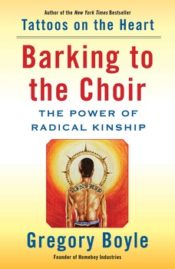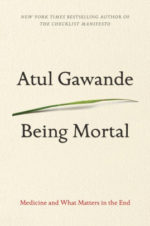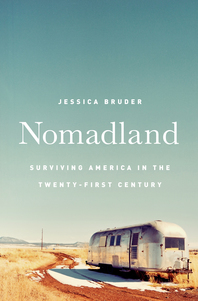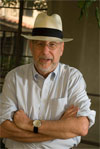The Elements of Learning 2.0: A Remix of Knowledge Acquisition and Practice
Posted on | May 25, 2011 | Comments Off on The Elements of Learning 2.0: A Remix of Knowledge Acquisition and Practice
 The words “remix” and “mashup” entered the vocabulary as descriptors of life in the digital age. They are also key to what I am calling Learning 2.0, the next full-scale version of public education.
The words “remix” and “mashup” entered the vocabulary as descriptors of life in the digital age. They are also key to what I am calling Learning 2.0, the next full-scale version of public education.
At the simplest level, these new terms are represented by three teenagers using Apple Garage Band to combine bits and pieces of music into their own composition. At a more complex level, the process of remix changes the nature of authorship, as it did for a recent book on digital learning in which the authors of the draft posted their text for comment and addition. Hundreds of people responded, and the book draft is still undergoing revision even after its publication by a university press.
Remix and mashup are linguistic markers for a growing practice of peer-produced learning, one that extends the instinct for tinkering and play into an approach to learning and scholarship. As pedagogy, these new words signal moving away from consumption to participation and from concentrating our attention on teaching to concentrating on learning. The shift in learning is not necessarily computer driven. As Connie Yowell, director of education at the MacArthur Foundation notes: “Our digital media and learning initiative is not about technology, turning our backs on teachers, or throwing out traditional literacy skills. It is about what people do with digital media — especially the potential for peer-based learning.” Indeed, the instinct for peer learning by doing infused the philosophy of John Dewey a century ago.
A glimpse of this world can be found in Exhibition Night at High Tech High in San Diego. Students at HTH learn from a pedagogy that deliberately integrates things that schools and society have sought to separate: head and hands, school and community. Thus, students in biology demonstrated their latest fieldwork, the DNA typing of samples from San Diego Bay. The students’ trips to the shore are not casual encounters, but real science that has led to six published books. Science is linked with history and language arts. As biotechnology teacher Jay Vavra says pointing to the English classroom across the hall, “Remember Cannery Row? I’m Ricketts; he’s Steinbeck.”
Once a year, HTH students present their work to parents and the community. These evenings are more than Science Fair; the act of explaining one’s work is part of the curriculum. Exhibition Night included student-written plays, a textbook on economics illustrated with linoleum block art, a conceptual art exhibit that was the product of lessons in geometry. The crowd pleaser of the night was a homicide scene complete with a dead mannequin, crime scene tape, and blood splatters. In his lab coat, the presenting student shows listeners how he and his fellow students were able to use geometry to determine the height and weight of the perpetrator and the type of murder weapon. (Conclusion: The teacher did it; her DNA was found on a toothbrush left at the crime scene.)
Head and hand integration are also present at The Stanley E. Foster Construction Technology Academy, a San Diego Unified School District high school just miles away. The school has broken down the traditional 7-period high school day into instructional blocks that allow students to pursue traditional academic subjects and exciting projects at the same time. In 2007, some 81 percent of the graduates were accepted in colleges.
Unfortunately, educators and policy advocates are deeply divided about how and whether to create schools that combine learning and becoming. Recently, Robert Schwartz, academic dean of the Harvard Graduate School of Education, did verbal battle with Kati Haycock, president of Education Trust, with Haycock saying that career-focused programs would mean giving up on the resources that low-income and minority kids need to succeed in school.
Schwartz and his colleagues had recently published Pathways to Prosperity that, among other things, criticized the college-for-all strategy as doomed to failure without much stronger career-oriented programs. Although the employment market is steadily demanding more education, they note, the largest employment bulge, and the greatest wage premium, appears for jobs requiring post-secondary licenses or certificates rather than bachelor’s degrees.
Linked Learning
Schools like High Tech High and the Construction Technology Academy have allowed practice to transcend the century-old debate over the value of academic versus vocational education. They want both. They believe the symbiosis engages students who would otherwise drop out or who would glide through high school’s path of least resistance.
Several California educators and organizations have been attempting to craft a practical solution. Under the names Multiple Pathways or Linked Learning, policy advocates such as Jeannie Oakes at the Ford Foundation and David Rattray at the school and employer partnership, UNITE-LA, seek to create policies and practices that bring academic and career education together, getting beyond tracking. Los Angeles Unified schools provide some vibrant examples:
Ninth grade students at the School for Global Studies near downtown Los Angeles tackled a project to support undocumented students who are headed to college, a homegrown version of the Dream Act. Their task, the shell of a project designed by their teachers, was to design a fundraiser that would help these students with enough money to pay for their college applications. The students I heard thought that luscious strawberries dipped in chocolate would be a sure seller. They used their algebra skills to plot a break-even point and figure profit margins at different production levels, their English language arts skills to promote the effort, and their digital media skills to produce a mouth-watering video.
In the process of completing projects, students learn teamwork and self-monitoring. They divide up the work and hold one another accountable. If a student fails to produce, it lets the whole team down, and they—the other students—will intervene with the errant student and his or her parents. Students also learn important oral communications skills. Meanwhile, the students’ teachers continue to provide lessons, quizzes, and reading related to California standards and the test items and question forms used on the California Standards and the high school exit exam.
At a training facility near LAX, the Police Orientation and Preparation Program links the school district, West L.A. College, and the Los Angeles Police Department. Students, who can come from any school in the city, enter as seniors or as community college freshmen. The high school students can finish their college-entry required courses and earn college credit while finishing high school. In two years it is possible for a high school senior to have graduated, earned an AA degree, and received a certificate qualifying them to work in a private security firm. They also have a leg up on candidacy for the LAPD academy.
The police preparation program and Global Studies Academy prepare students for college and careers simultaneously. In California, unlike many other locations, the state’s flagship university reviews individual course descriptions from public and private high schools to determine whether they meet entry requirements, known as the A—G requirements. More than 5,600 courses, about 20 percent of all career-technical education offerings, already satisfy University of California entrance requirements. UC also sponsors the Curriculum Integration Institute, where academic and career technical education experts meet to design integrative model courses.
As well as university standards, Linked Learning requires real world, craft and artistic standards. For example, ACME animation, a non-profit organization, connects high school and college students with professional animators. ACME grew from the teaching experience of Dave Master, who started an animation program at Rowland High School, east of Los Angeles, in 1977. High school students begin as auditioners, but even from the start their work is subject to professional standards and critique. No sugarcoating. And the same method—not unlike introduction to the historic artisanal guilds—is used for more advanced students who want to earn a living in animation. Professionals donate their time, and more than 3,000 students in 35 schools and colleges nationwide participate. Four of these schools are in the Los Angeles Unified School District.
The remix of head and hand is a powerful idea, but Linked Learning or Multiple Pathway schools have to work as organizations. Because combining head and hand runs counter to many of the deep structures of American high schools, the multiple pathway idea becomes tractable because each pathway is usually contained in an “academy” within a larger school or a small school, such as a magnet, charter, or pilot school. Thus, the capacity for remix, linking head and hand, lies partly in public policies that allow substantial autonomy and self-determination at the school level.
It’s difficult work, but it is one of the areas of education where California is a national leader. The James Irvine Foundation has heavily supported Linked Learning, including founding ConnectEd the California Center for College and Career. A number of organizations, including the Buck Institute, and the New Tech Network provide introductory training and an extensive library of projects that schools can adopt.
Tags: California > Connie Yowell > High Tech High > LAPD > LAUSD > Linked Learning > MacArthur Foundation > School of Global Studies




